Wall Street Tumbles as Jobs Report and Tech Weakness Stir Fears of Economic Slowdown | Weekly Market Analysis
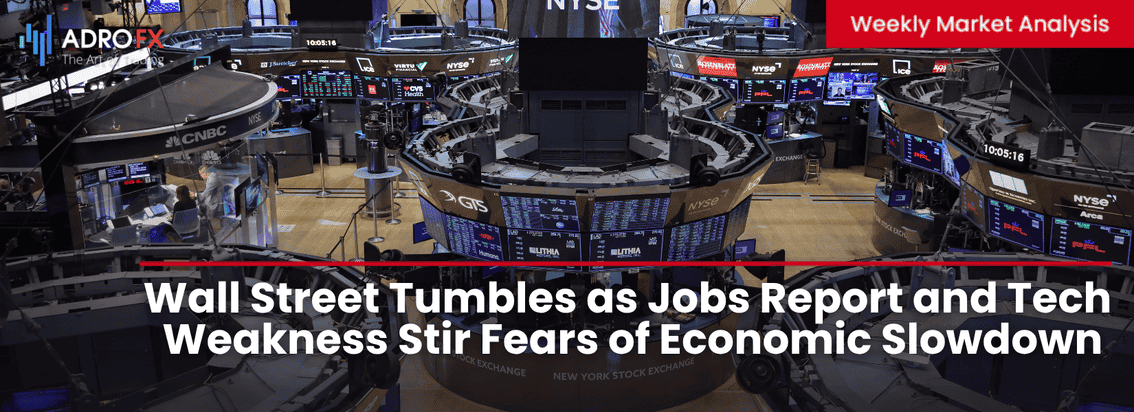
Key events this week:
Tuesday, August 5, 2025
- USA - S&P Global Services PMI (Jul)
- USA - ISM Non-Manufacturing PMI (Jul)
- USA - ISM Non-Manufacturing Prices (Jul)
Wednesday, August 6, 2025
- USA - Crude Oil Inventories
- USA - 10-Year Note Auction
Thursday, August 7, 2025
- UK - BoE Interest Rate Decision (Aug)
- USA - Initial Jobless Claims
- USA - 30-Year Bond Auction
Financial markets closed out the week on a downbeat note, with all three major US indices posting steep losses. Investors were rattled by an underwhelming jobs report and mounting weakness in the tech sector, particularly from Amazon, which combined to paint a worrying picture of the broader economic outlook.
The Dow Jones Industrial Average dropped by 542 points, a decline of 1.7%, while the S&P 500 also shed 1.7%. The Nasdaq Composite fared the worst, falling 2.2% amid tech-led declines.
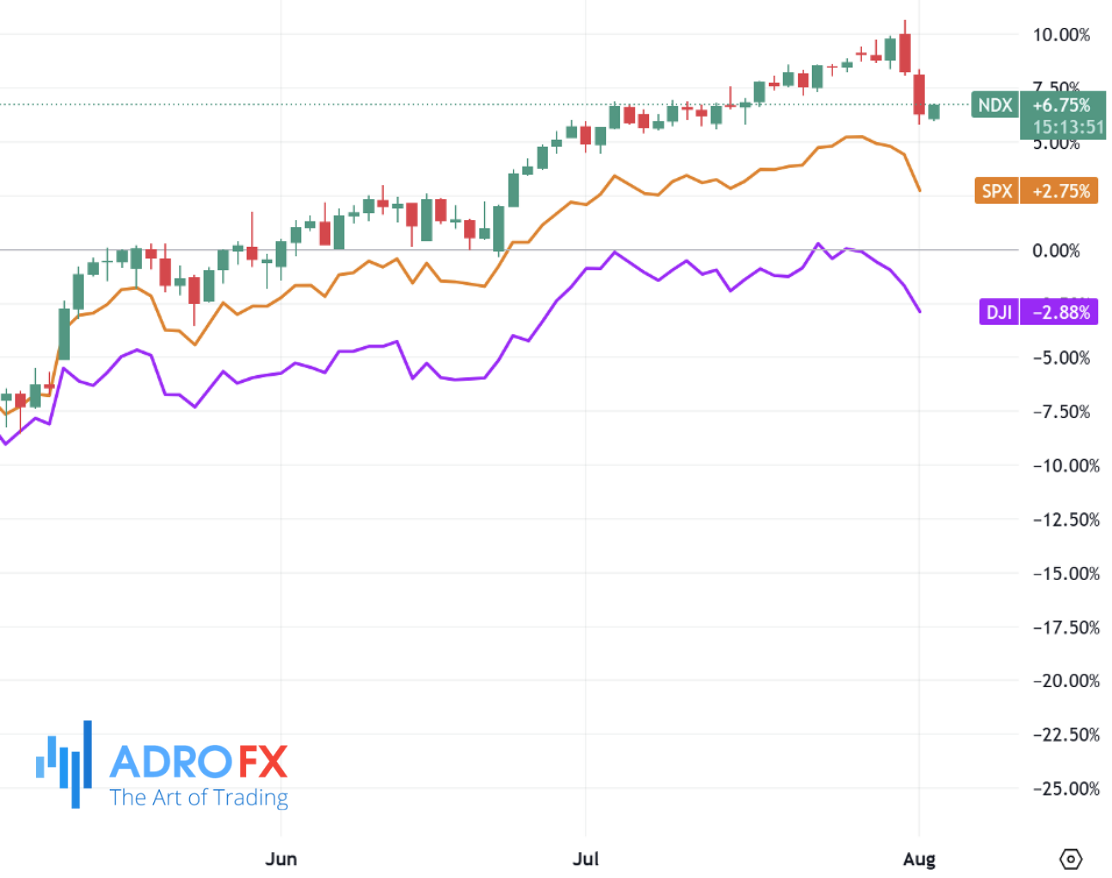
Market participants were keenly focused on fresh labor market data from the Labor Department. The July jobs report revealed that only 73,000 positions were added during the month, falling well short of the 106,000 anticipated by analysts. Additionally, June’s already weak numbers were sharply revised downward to a mere 14,000 from a previously reported 147,000. Compounding concerns was an uptick in the unemployment rate, which rose to 4.2% from 4.1% in June, further stoking fears of a cooling labor market.
The disappointing employment data provoked a political response. President Donald Trump reportedly ordered the immediate dismissal of Labor Statistics Commissioner Erika McEntarfer, accusing her - without evidence - of manipulating employment figures in advance of the last election. In a post on Truth Social, Trump emphasized his desire for what he called “accurate Jobs Numbers” and said McEntarfer would be replaced by someone “more competent and qualified.”
Financial markets responded swiftly to the jobs miss. Treasury yields dropped as traders quickly recalibrated their expectations for interest rate policy, pricing in increased odds of a Federal Reserve rate cut as early as September. These expectations were further reinforced by the resignation of Fed Governor Adriana Kugler, who is set to step down on August 8. Her departure clears the way for a new Trump appointee, possibly one with a more dovish stance on interest rates.
Despite growing pressure from the White House, the Federal Reserve left interest rates unchanged for the fifth consecutive meeting earlier in the week. Chair Jerome Powell has so far resisted calls for immediate rate reductions, citing still-elevated inflation as a key concern. Though labor market indicators suggest growing strain, inflation remains above the Fed’s long-term 2% target. Economists are also closely monitoring how Trump’s tariff policies are beginning to affect prices, particularly in trade-sensitive sectors.
In the corporate arena, Amazon stock dragged down the broader tech sector after the company issued a weaker-than-expected operating income forecast. While Amazon Web Services, the company’s cloud division, reported a year-over-year revenue increase of 17.5% — slightly beating analyst projections — investors were unimpressed, citing fears of shrinking market share in an increasingly competitive space.
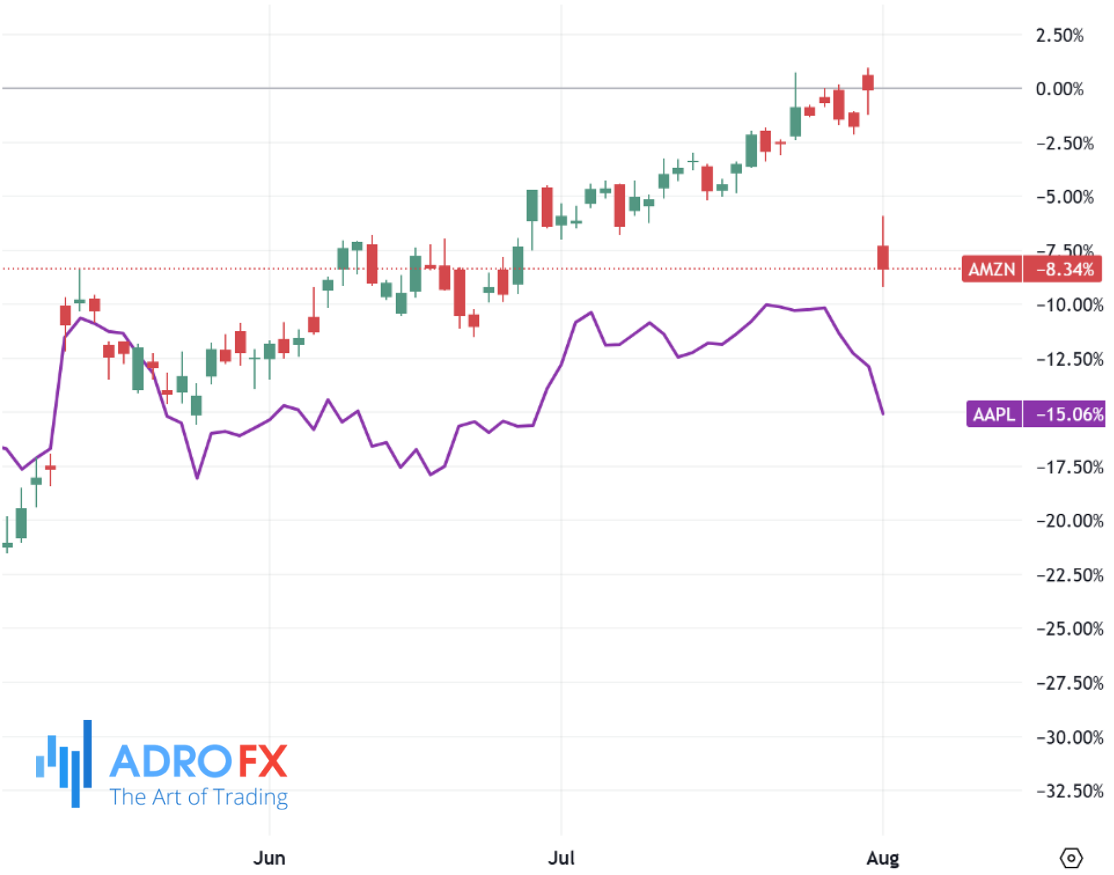
Apple, which posted better-than-expected third-quarter results thanks to rebounding demand in China and record-high services revenue, was not immune to the broader market sell-off. The tech giant’s shares gave up gains as investor enthusiasm cooled, partly due to Apple’s relatively slow progress in artificial intelligence compared to rivals.
The Japanese Yen remained under pressure, extending recent losses against a firming US Dollar. The dovish stance maintained by the Bank of Japan, combined with ongoing political uncertainty at home, continued to weigh on the Yen. However, a broader risk-off sentiment in equity markets provided a measure of support to the traditionally safe-haven currency. Expectations for a Fed rate cut in the near term also limited further gains for the Dollar, contributing to a more tempered USD/JPY trajectory.
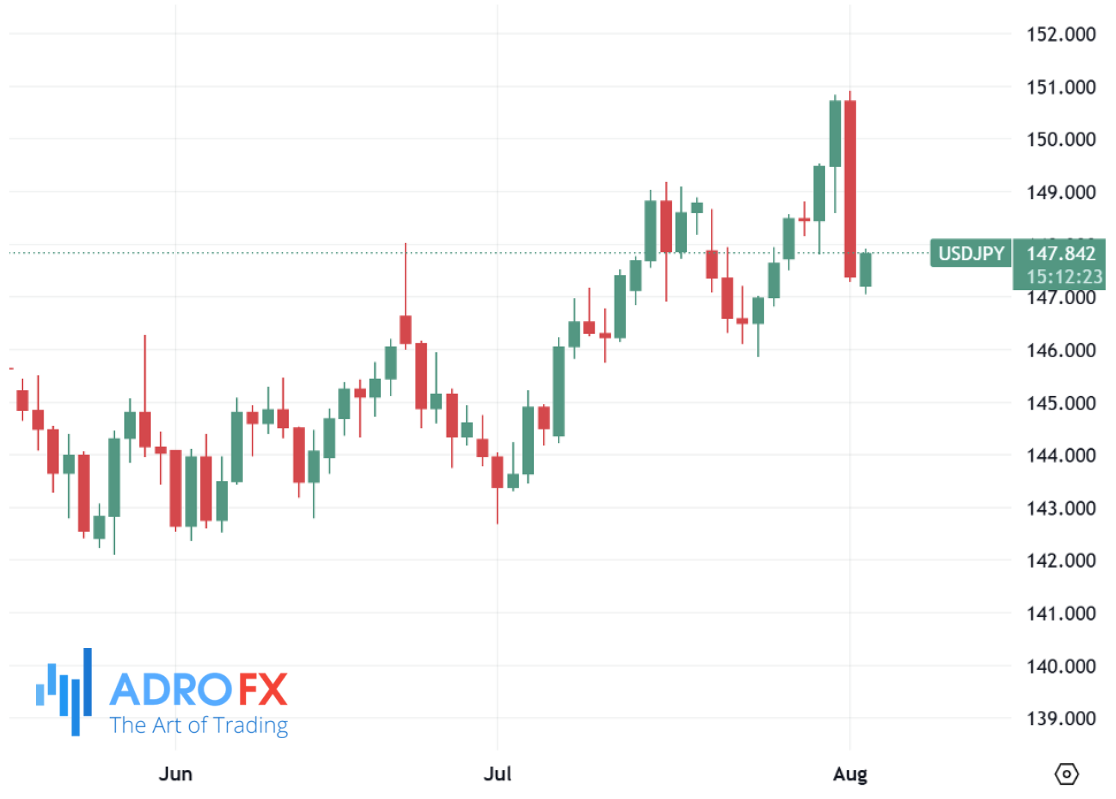
Meanwhile, the Australian Dollar made strides against the greenback, buoyed by a significant jump in local inflation data. The TD-MI inflation gauge surged by 0.9% in July, marking the largest monthly increase since December 2023 and raising fresh concerns for the Reserve Bank of Australia. The RBA is now faced with mounting inflationary pressures amid ongoing global supply chain uncertainty and fluctuating consumer demand. The Aussie also benefited from being excluded from Trump’s latest round of tariff hikes, with baseline tariffs on Australian goods left unchanged at 10%.
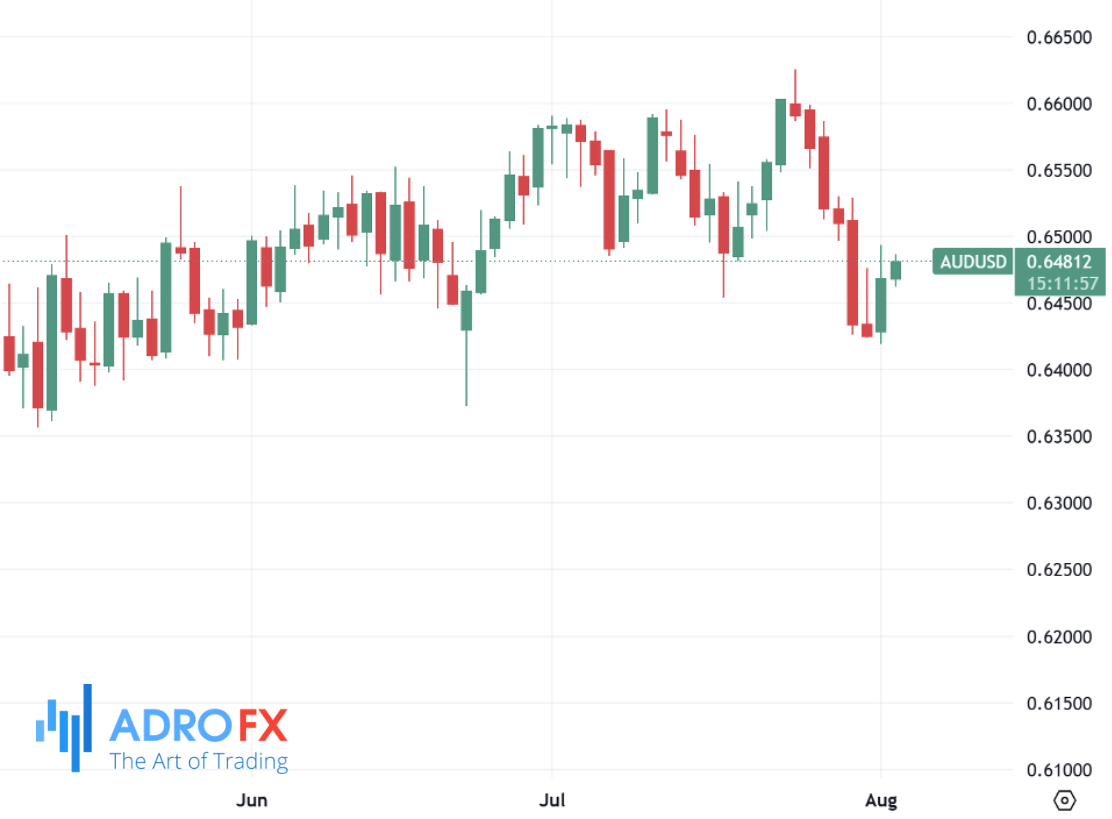
Elsewhere, trade tensions between the US and China resurfaced after talks in Stockholm failed to extend the 90-day tariff pause. Without a resolution by August 12, new duties are likely to be reinstated. Though both sides have lowered existing tariffs - US rates from 145% to 30%, and China’s from 125% to 10% - the absence of a long-term deal keeps markets on edge. Ultimately, President Trump will determine whether the current truce continues or collapses.
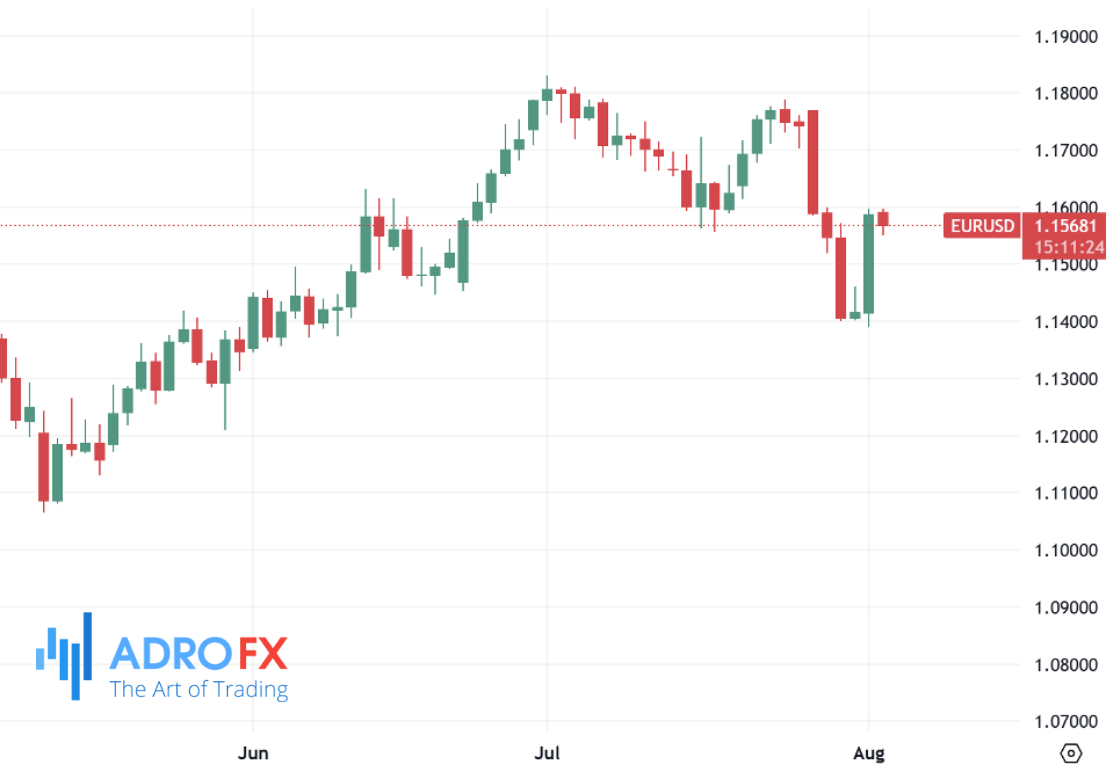
The Euro held its ground against the Dollar, with EUR/USD hovering near 1.1570 during late Asian trading. Lingering skepticism over the accuracy of US economic data contributed to the Dollar’s muted tone, as did a soft performance in the US Dollar Index, which remained around 98.70. The Eurozone’s preliminary inflation data for July added to its strength. Both headline and core Harmonized Index of Consumer Prices (HICP) came in above forecasts, with year-over-year increases of 2.0% and 2.2%, respectively, tempering expectations for more ECB rate cuts in the near term.
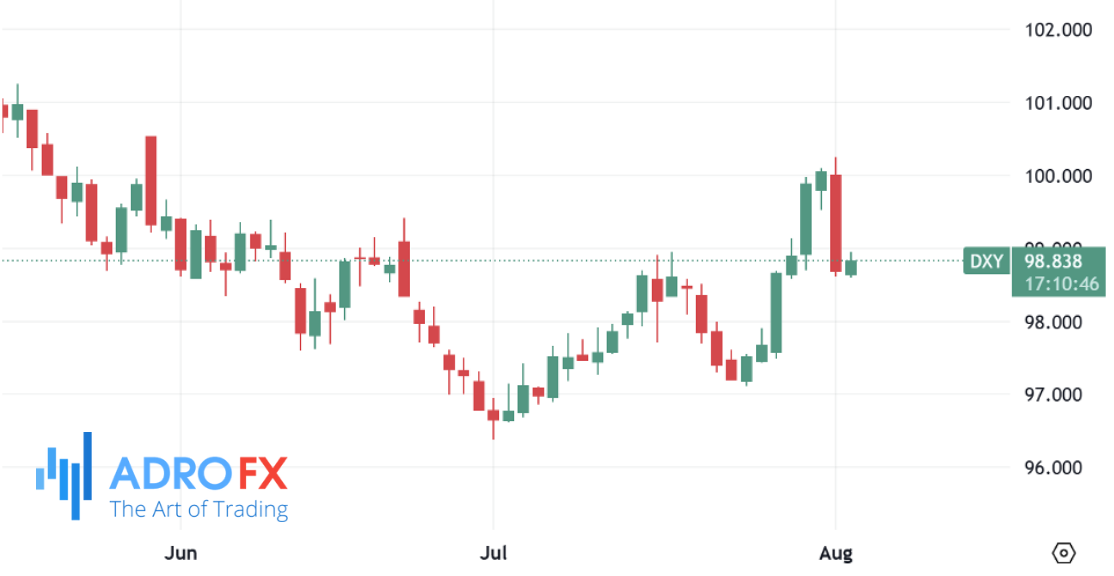
Gold prices experienced a modest pullback after touching a one-week high around the $3,369 level. Although the precious metal had rebounded from a one-month low the previous week, investor caution set in as market participants weighed geopolitical and economic crosscurrents. Tensions escalated after President Trump ordered the deployment of two nuclear submarines near Russian waters in response to hostile rhetoric from former Russian President Dmitry Medvedev. The aggressive move heightened fears of an extended conflict in the already-volatile Russia-Ukraine region, adding another layer of support for gold as a safe-haven asset.
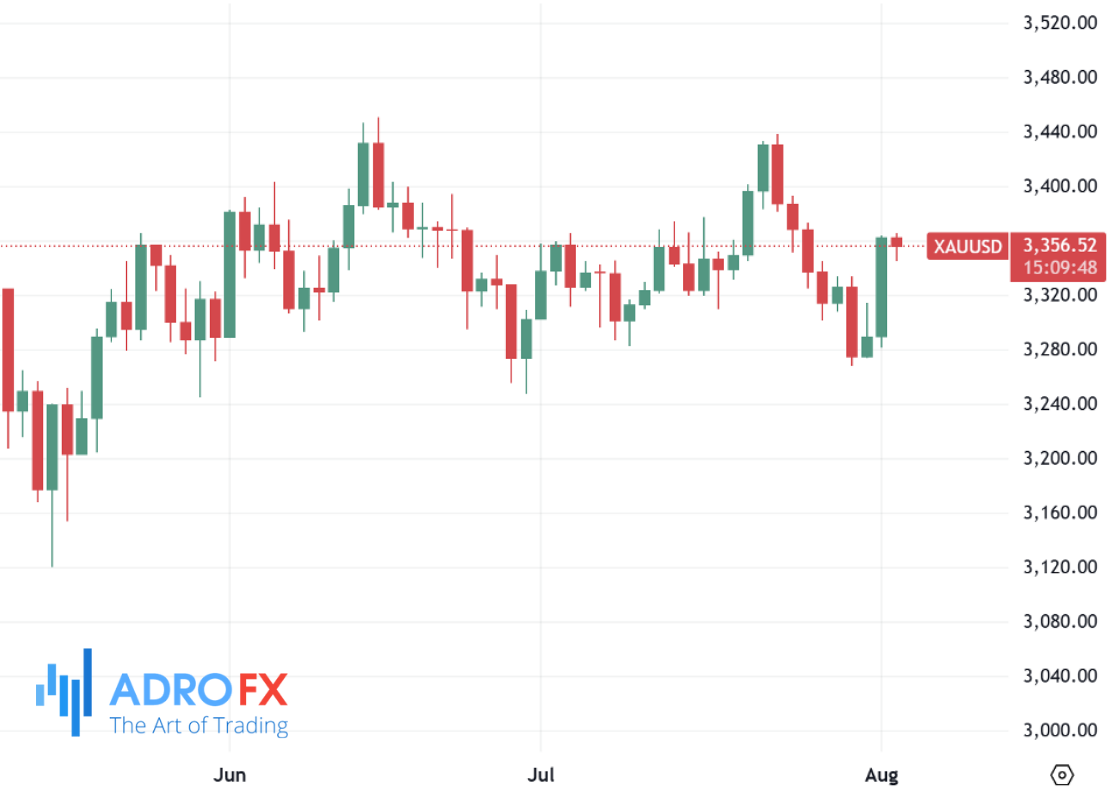
The Canadian Dollar remained subdued as trading opened for the week, with the USD/CAD pair hovering around 1.3770. Oil prices, a key driver of the CAD, posted a minor recovery with West Texas Intermediate crude trading near $66.60 per barrel. However, the rebound was capped by the announcement from OPEC+ to boost output by over half a million barrels per day in September. The planned increase, aimed at recovering lost market share, may exert downward pressure on oil prices going forward.
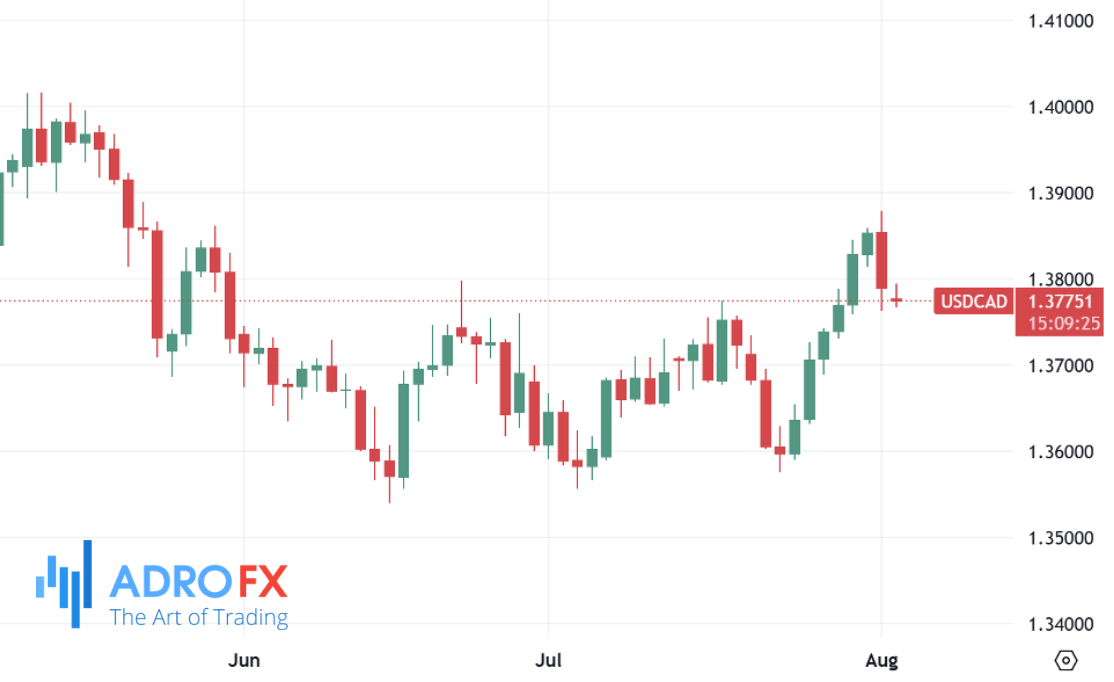
Although Canadian exports enjoy partial exemption from Trump’s tariffs under the USMCA framework, the US president's decision to raise general tariffs to 35% stirred market concerns. Nonetheless, the effective rate on Canadian goods remains closer to 5%, helping to dampen the overall impact on cross-border trade. Meanwhile, Canadian markets remained quiet in observance of the August Civic Holiday.
Looking ahead, market attention is shifting to US Factory Orders data, set for release later in the North American session. Investors will also closely watch the release of the Bank of Japan’s Monetary Policy Meeting Minutes on Tuesday, which may provide further insight into the central bank’s future path amid heightened global uncertainty.









